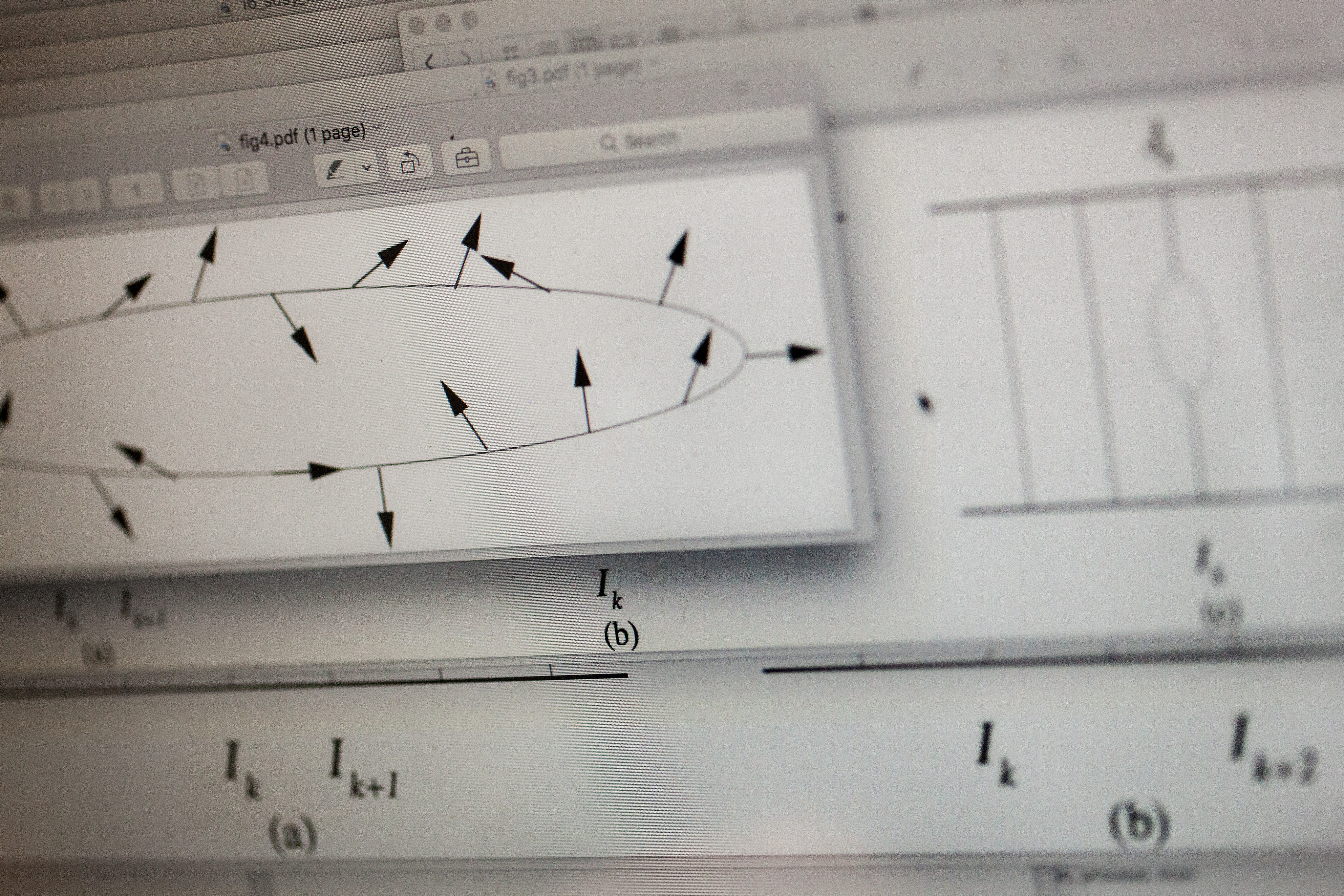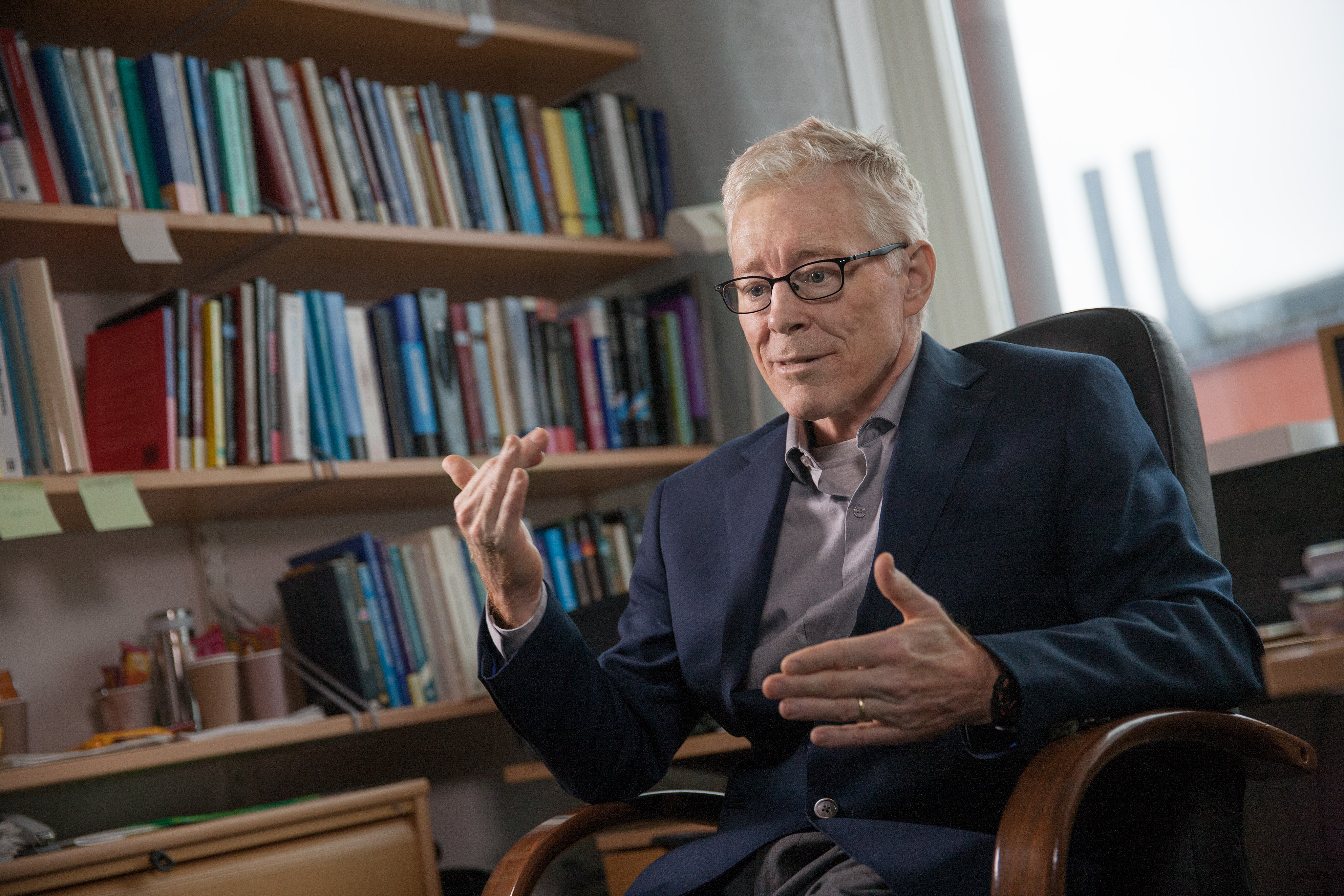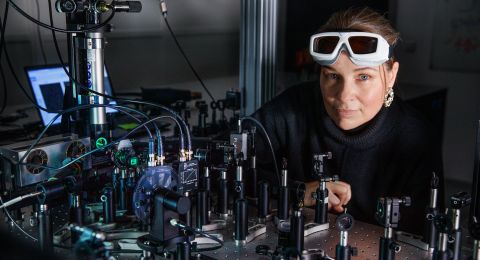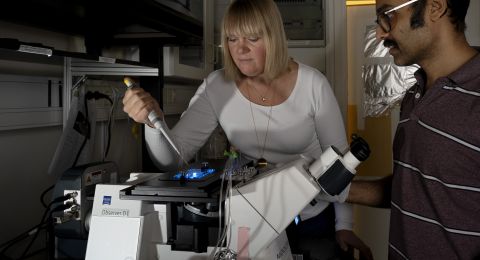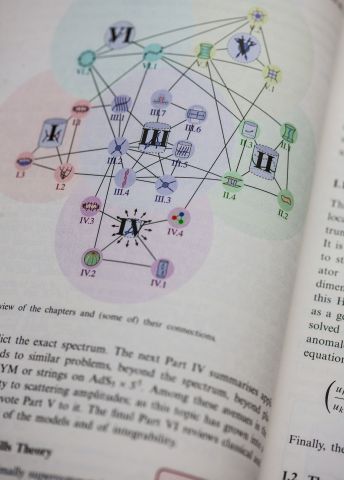
Project Grant 2015
Exact Results in Gauge and String Theories
Principal investigator:
Joseph Minahan, Professor of Theoretical Physics
Co-investigator:
Konstantin Zarembo
Institution:
Uppsala University
Grant:
SEK 34 million over five years
Professor Joseph Minahan works at the Ångström Laboratory, a few kilometers south of downtown Uppsala. His blackboard is covered in equations giving ample testimony of complex reasoning.
“I don’t use it much myself – mostly when a master’s or a PhD student wants to demonstrate and discuss something.”
The theoretical physics research team headed by Professor Minahan is developing theories to describe and calculate interaction between the smallest particles in the universe, in particle physics called elementary particles.
“We are trying to understand the forces acting between these particles. This involves the shortest possible distances that can be studied in nature. They are even shorter than those studied in the CERN particle accelerator. There is still much we don’t understand about these theories, but that’s also what makes it so exciting.”
Quarks trapped in protons
In early 2000, when he had just moved to Uppsala from MIT in the U.S., Minahan met the Russian researcher Konstantin Zarembo, who was working in the same department. They began a joint project on one of the great unsolved mysteries of particle physics: the confinement problem.
The nucleus of an atom consists of neutrons and protons, which are in turn made up of particles called quarks. Professor Minahan elaborates:
“A quark cannot exist independently; you can’t extract an individual quark and have a look at it. Quarks are trapped inside the proton or the neutron. We call this phenomenon confinement. We know this is how it is, that they can’t get out, but we want to gain a truly fundamental understanding of why.”
He explains that one consequence of confinement is that particles that would not normally have mass, acquire it. Why they do so is a long-sought-after missing piece in the theoretical jigsaw puzzle of particle physics. Researchers in the field refer to this problem as a theory gap.
“If we can fill this gap and understand these properties, we might also be able to understand other properties in particle physics. And our work in this field also has implications for developments in mainstream mathematics.”
Started a new field of research
The theory used to understand the strong force keeping the quark inside the proton is called gauge theory. It is a quantum field theory that describes the interaction between particles in matter. To tackle the confinement problem, Minahan and Zarembo needed to advance a special gauge theory. And it turned out they were on to something.
“In 2003 we made great strides, and published a scientific article that marked the beginning of an entirely new research field in theoretical physics. There are now some two hundred researchers in this field worldwide.”
Minahan and Zarembo, who are now based at Nordita, the Nordic Institute for Theoretical Physics, in Stockholm, have continued to work together over the years. The grant from the Knut and Alice Wallenberg Foundation will boost the Swedish research on gauge theories that they have both been so instrumental in putting on the map.
“This funding means a huge amount to us. We want to keep this project going, and will now be able to recruit more young international researchers.”
Less supersymmetry
Ultimately, Minahan comments, it is all about the desire to answer the major questions of particle physics, adding that most of the time these questions are too difficult to answer. That is why researchers break them down into “simpler” problems:
“One way of simplifying the problems is to add symmetry and make them supersymmetric. It is assumed that each particle has a “superpartner” with the same mass and charge. It sounds like it should make it more complicated, but when extra particles are added in a theory a lot of terms cancel out, which makes everything much easier to calculate.”
The gauge theory that Minahan and Zarembo are working on has the maximum amount of supersymmetry that can be put into a theory and still be consistent. One of the main aims of the project is to get away from some of the supersymmetry.
“Although we can make fantastic calculations with this maximized supersymmetric gauge theory, we know it will not resolve the confinement problem. In the real world there is no supersymmetry at all. We have to reduce the supersymmetry in our calculations to get closer to the exact answer. Technically speaking, this is really hard, and is our greatest challenge,” Minahan explains.
Patience and persistence are great assets for a researcher in theoretical physics.
“Things have stood still in this field for a while, as they often do in physics until someone publishes an article breaking new ground. Then it takes off again, perhaps in a new direction. Right now we’re waiting for the next breakthrough. Naturally, I hope it’s made by someone in my team or in Konstantin’s.”
Text Susanne Rosén
Translation Maxwell Arding
Photo Magnus Bergström
